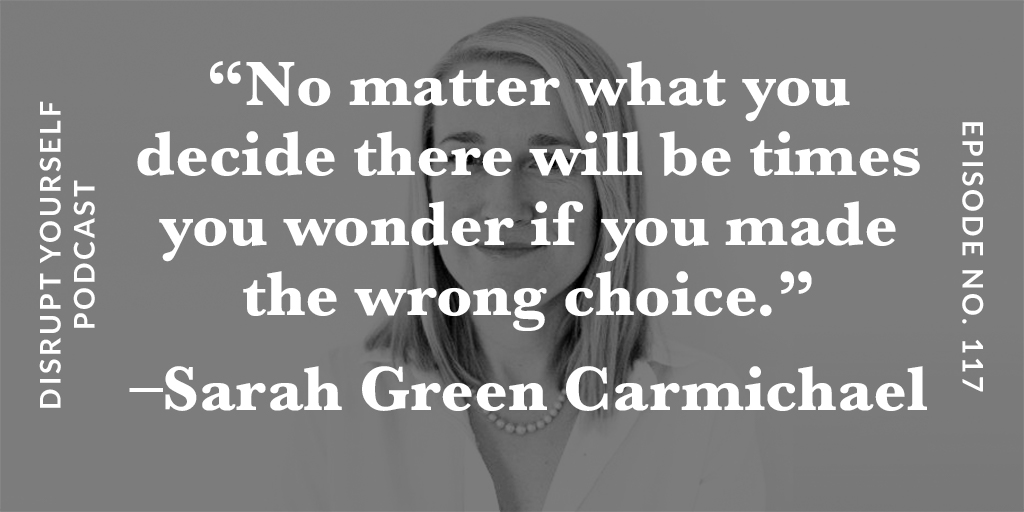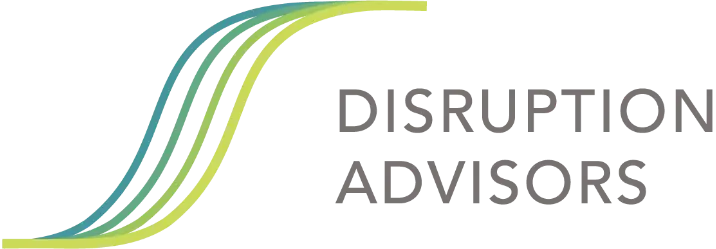I always love speaking with individuals at the low end of the learning curve. So many emotions are on the surface, but by the time someone hits the sweet spot, they often don’t remember how hard it was to do the things that now come easily.
In an attempt to capture this movement along the learning curve, today’s podcast is in a new format: part one was recorded back in December, when my guest, Sarah Green Carmichael, had just left her position as Executive Editor at the Harvard Business Review. I’ve known Sarah for ten years, and this was a BIG jump. She was comfortable at her job and loved her colleagues, but she was clearly at the top of her curve. It was time to jump…but that didn’t make it an easy decision.
But then I also felt kind of like…why wouldn’t I try something else? And I think I had some fears about what if I’m not as good at the new thing? What if I don’t like it as much? What if I try it and it doesn’t work out? And when I was kind of honest with myself about that, I was like, well, I don’t want the reason I don’t try something new to be because I’m afraid.
Conquering her fear, Sarah accepted an offer to work as a Managing Editor of Ideas at Barron’s. In part two of the podcast, we catch up with Sarah several months later, after she’s had time to settle into her new role. We discuss the steep part of her learning curve, what happened in her first few months, what surprised her, and where she is on her learning curve after an unexpected new curve came her way.

I loved discussing Sarah’s “jump,” because her story is so similar to many I’ve heard across the country. When you’ve grown complacent in your job but it’s not “bad,” is it worth the leap? It’s uncomfortable at the top of the learning curve, but it’s uncomfortable at the bottom, as well.
No matter what you decide there will be times you wonder if you made the wrong choice. So if you decide to play it safe and not change you will wonder if that was the right choice, if you decide to make the change and take the risk there will be times you wonder if that was the right choice, so you can’t really avoid that kind of questioning or doubt by staying in one place.
I hope you enjoy this disruption of our format. Listen in the player above, or download the episode on Apple Podcasts or wherever you listen to podcasts. And please let me know what you think in the comments!
Takeaways from this episode:
- Advice for those in the job market: cover letters and “thank you” notes to interviewers matter.
- Sarah’s job at the Harvard Business Review was the result of some freelance work she did for a friend of a friend of her mother’s, who also happened to be related to someone who worked at HBR. You never know where your leads will come from—check your network!
- Her first position at HBR wasn’t as great a fit as Sarah originally hoped, but she was able to disrupt herself within the same organization. She found something that challenged her and more closely aligned with her interests. She finally felt “This is the place for me.”
- It took 12-18 months from when Sarah first began thinking of leaving HBR to it actually happening. Jumping to a new learning curve is disruptive, but it doesn’t need to be fast or reckless. If you have the option, wait to find what looks like a good curve and then jump.
- Months after changing jobs, Sarah discovered that she still missed the people and relationships at HBR. She realized she will always miss them—and that’s ok. It doesn’t mean she made the wrong decision; it simply means she forged some great bonds over 12 years.
- Sarah’s new boss at Barron’s left a few months after Sarah took on her new role, disrupting her disruption! A new boss meant new goals, new working styles, and new challenges. It’s different, but not “bad different.” As Sarah says, “Things around you also change, and you have to learn how to change with them.”
- We know from disruptive theory that the odds of success are 6x higher when you take a disruptive course. We also know that not every new learning curve is the right learning curve. You may need to jump from the middle of a curve instead of waiting for the top. This is especially common when your initial leap is from a company where you worked for a long time. Don’t panic—jump again. No S curve is ever wasted.
Links Mentioned in this Episode:
- Sarah Green Carmichael – Twitter | LinkedIn
- HBR IdeaCast – How Your Identity Changes When You Change Jobs
- Preparing for Change – Free Email Course
- Build an A-Team: Play to Their Strengths and Lead Them Up the Learning Curve by Whitney Johnson
- Download a free chapter from Build an A-Team

